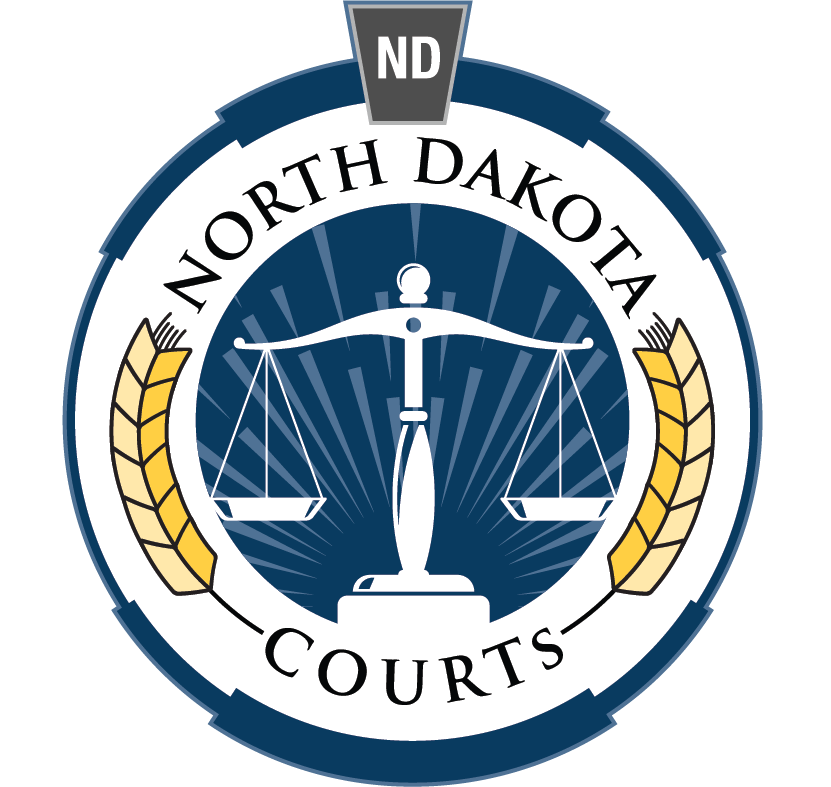RULE 3.4. PRIVACY PROTECTION FOR FILINGS MADE WITH THE COURT
Effective Date: 3/1/2025
(a) Definitions.
(1) “Confidential” means information in a court record as described in Rule 3.4(b)(1) or as ordered by the court, which is protected from public access but remains accessible to the court and the parties.
(2) “Redact” means to remove confidential information from a court record to protect it.
(3) “Sealed” means court records that are protected from public access, party access and access by unauthorized court personnel.
(b) Redacted Filings.
(1) In General. Unless the court orders otherwise, a court record that contains an individual's social-security number, taxpayer-identification number, birth date, the name of an individual known to be a minor, or a financial-account number, including any credit, debit, investment or retirement account number, must be redacted to include only:(A) the last four digits of the social-security number and taxpayer-identification number;(B) the year of the individual's birth;(C) the minor's initials;(D) the last four digits of the financial-account number; and(E) if a victim requests, all victim contact information must be redacted from documents to be filed with the court in a criminal or delinquency case.
(2) Responsibility of Party or Nonparty to Redact. A party or nonparty making a filing with the court is solely responsible for ensuring that information required to be redacted under Rule 3.4(b)(1) does not appear on the filing.
(3) Exemptions from Redaction Requirement. The redaction requirement does not apply to the following:(A) any case record not accessible to the public under N.D. Sup. Ct. Admin. R. 41(3)(b)(6) and (7);(B) the record of an administrative or agency proceeding;(C) the record of a court or tribunal, if that record was not subject to the redaction requirement when originally filed;(D) a filing covered by Rule 3.4 (c);(E) the name of an individual known to be a minor when the minor is a party, including:(i) in a non-criminal traffic case;(ii) in a change of name case;(iii) in a minor conservatorship case;(iv) named in a domestic violence protection order, disorderly conduct restraining order or sexual assault restraining order;(v) when the law requires the public disclosure of the minor’s full name; or(vi) as otherwise ordered by the court.(F) a defendant's date of birth in a court filing that is related to criminal matters, non-criminal motor vehicle and game and fish matters, and infractions.
(c) Procedure to Protect from Public Access.
(1) Parties may not seal otherwise public documents by consent or by labeling them “sealed” or “confidential.”
(2) Motion. A party may move that a filing be designated “confidential” or “sealed.” In its motion, the party must show that protection of the filing is justified under the factors listed in N.D. Sup. Ct. Admin. R. 41(4)(a). A motion to protect a filing from public access, the filing in question, and any supporting documents, must be filed as “confidential” until the court makes its ruling. A court record may not be designated “confidential” or “sealed” under these rules when reasonable redaction will adequately resolve the issues and protect the parties.
(3) Court Order. On motion, or on its own, the court may order that a filing be designated “confidential” or “sealed”. The court may later order that the filing be made public or order the person who made the filing to file a redacted version for the public record.
(d) Filing a Confidential Information Form.
(1) In General. A filing that contains redacted information must be filed together with a confidential information form (shown in Appendix H) that identifies each item of redacted information and specifies an appropriate identifier that uniquely corresponds to each item listed. The form will be confidential except as to the parties or as the court may direct. Any reference in the case to a listed identifier will be construed to refer to the corresponding item of information.
(2) Defendant Information. In a criminal case, the prosecutor must file a confidential information form that includes, when known, the defendant's social security number.
(e) Non-conforming Documents.
(1) Waiver. A person waives the protection of Rule 3.4 (b) as to the person's own information by filing it without redaction or without moving that the information be protected from public access.
(2) An individual may apply to the court to redact the individual’s own improperly included protected information from a filed document and the clerk of court must temporarily restrict access to the document pending order by the court.
(3) If the court finds protected information was improperly included in a filed document, the court must restrict access to the document and may order a properly redacted document to be filed.
(f) Sanctions. If a filer fails to comply with this rule, the court, upon its own motion or upon the motion of any party, may impose sanctions. Sanctions may include:
(1) an order requiring the pleading or other document to be returned to the party for redaction;
(2) an order striking the document; and
(3) an award of attorney’s fees and costs to an individual required to bring a motion under Rule 3.4(e)(2).
Rule 3.4 was adopted effective March 1, 2009. Rule 3.4 was amended, effective March 15, 2009; March 1, 2010; May 1, 2017; March 1, 2021; March 1, 2025.
Parties should limit the amount of information required to be redacted under paragraph (b)(1) they include in court filings. Paragraph (b)(1) requires parties to redact designated information when its inclusion in a filing cannot be avoided.
Paragraph (b)(1)’s redaction requirements are intended to exclude designated information from public disclosure. Unless a document is also placed in a non-restricted file, redaction of documents filed in cases that are confidential by law or rule is not required.
Documents containing information redacted under paragraph (b)(1) must be filed together with a confidential information form under subdivision (d) when a party is required by statute, policy or rule to include information required to be redacted under paragraph (b)(1) in the document. For example, N.D.C.C. § 14-05-02.1 requires a divorce decree to contain the social security numbers of the parties to the divorce. Under subdivision (d), a party to a divorce case may comply with this statute and the redaction requirements of this rule by filing a confidential information form and a redacted version of the decree in the public part of the file.
A new subdivision (a) was adopted, effective March 1, 2025, to add a definitions section to the rule.
A new subdivision (b) was adopted, effective March 1, 2025, to consolidate the rule’s provisions relating to redaction.
Paragraph (b)(1), formerly paragraph (a)(1), was amended, effective March 1, 2010, to eliminate the requirement to redact addresses in criminal matters.
Subparagraph (b)(1)(E), formerly paragraph (a)(2), was adopted, effective May 1, 2017, to require, upon request of the victim, the redaction of all victim contact information from documents before they may be filed with the court in a criminal or delinquency case. This right is granted by N.D. Const. Art. I, § 25(1)(e). "Victim" is defined in N.D. Const. Art. I, § 25(4).
Paragraph (b)(2), formerly subdivision (b), was adopted, effective March 1, 2010, to indicate it is the responsibility of a party or nonparty making a court filing to refrain from including information required to be redacted under paragraph (b)(1) in the filing. The clerk of court is not required to review a document filed with the court for compliance with this rule.
Subparagraph (b)(3)(E), formerly paragraph (c)(8), was amended, effective March 1, 2025, to list circumstances in which the full name of a minor who is a party must be used.
Subparagraph (b)(3)(F), formerly paragraph (c)(9), was amended, effective March 1, 2010, to add a redaction exemption for a defendant's date of birth in a court filing that is related to criminal matters, non-criminal motor vehicle and game and fish matters, and infractions.
A new subdivision (c) was adopted, effective March 1, 2025, to clarify the process for protecting a filing from public access.
Subdivision (d), formerly subdivision (f), was amended, effective March 1, 2010, to require that state's attorneys file confidential information forms containing certain defendant information when known.
Subdivision (e), formerly subdivision (g), was amended, effective March 1, 2010, to allow courts to order reformation of documents not in conformity with this rule prior to filing.
Subdivision (e) was amended, effective March 1, 2025, to allow individuals to apply to the court to redact an individual’s own improperly included protected information.
Subdivision (f) was added, effective March 1, 2025, to provide more information on sanctions available for noncompliance with this rule.
Rule 3.4 was amended, effective March 1, 2021, to delete the term “affidavit” and replace it with “declaration.” This amendment was made in response to N.D.C.C. ch. 31-15, which allows anyone to make an unsworn declaration that has the same effect as a sworn declaration, such as an affidavit. N.D.C.C. § 31-15-05 provides the required form for an unsworn declaration.
SOURCES: Joint Procedure Committee Minutes of September 26, 2024, pages 8- 9; January 26, 2024, page 4; September 28, 2023, page 2; April 28, 2023, pages 2-5; January 12, 2023, pages 2-3; September 30, 2021, page 10; April 29, 2021, pages 2-4; January 28, 2021, pages 19-20; April 24, 2020, pages 4-5; January 26-27, 2017, page 22; September 24-25, 2009, pages 3-7; May 21-22, 2009, pages 28-44; January 24, 2008, pages 9-12; October 11-12, 2007, pages 28-30; April 26-27, 2007, page 31.
STATUTES AFFECTED:
CONSIDERED: N.D. Const. Art. I, § 25; N.D.C.C. ch. 31-15, § 14-05-02.1
CROSS REFERENCE:: N.D.R.Ct. 3.1 (Pleadings); N.D.Sup.Ct.Admin.R. 41 (Access to Judicial Records).

